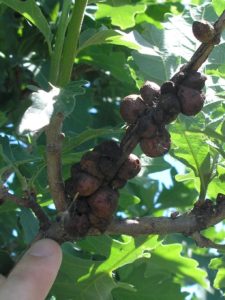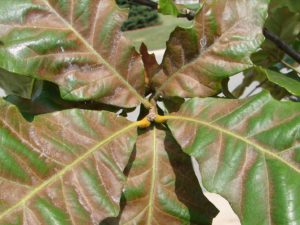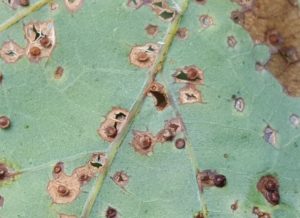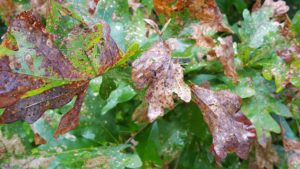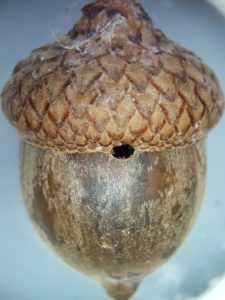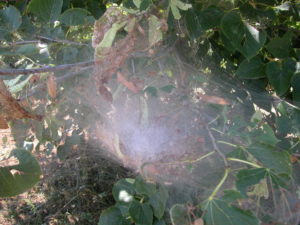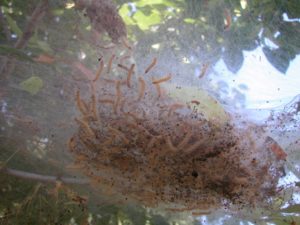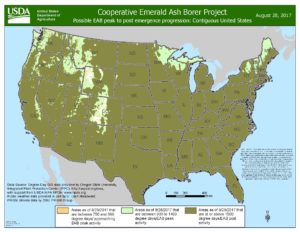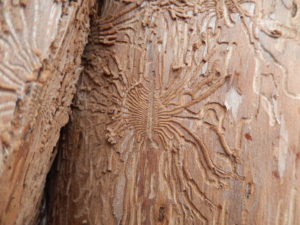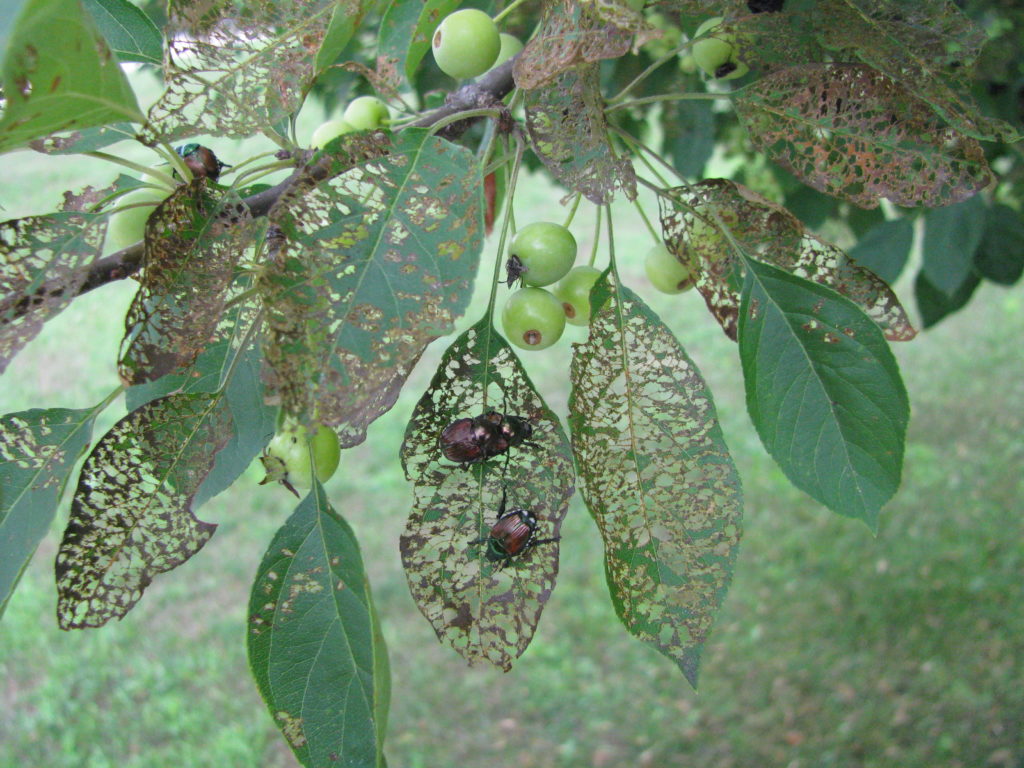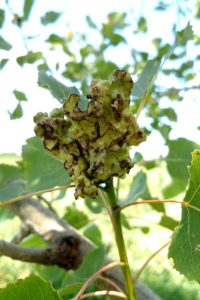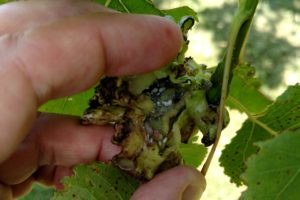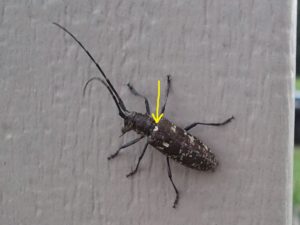
Our native pine sawyer has a “spot” between the elytra (yellow arrow) that Asian longhorned beetle does not have. They also will appear dusty or pitted.
White spotted sawyer, sometimes called Pine Sawyer, is a native longhorn beetle. It is often mistaken for Asian Longhorned Beetle (ALB). How can you tell the difference between our native beetle and ALB? First of all, size: ALB is a big burly beetle, while our native sawyer beetle looks slim in comparison. Second, ALB has a very smooth shiny appearance with distinct white spots on black wing covers, whereas our native sawyer beetle will appear pitted or dusty, and the white spots may be less distinct or absent. Finally, our native beetle will have a nice white dot “between its shoulders” where the wing covers meet, and ALB does not have this.
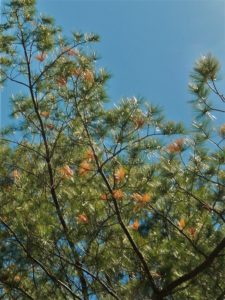
Adult pine sawyer beetles feed on the bark of twigs which can cause branch tip mortality.
Pine sawyer larvae develop in weakened, recently dead, or recently harvested conifers. Larvae first feed in the phloem layer then progress to inner wood. They will pupate within the tree and adults will chew their way out leaving large round exit holes. Adults feed on needles and the bark of twigs. Areas this year which will attract white spotted sawyers include areas of storm damaged pine, and areas of conifer decline due to high water levels, as well as any other areas where conifers are stressed.
If you find a beetle and are unsure whether it’s ALB or our native sawyer, please take some photos to send for identification.
Written by: Linda Williams, forest health specialist, Woodruff, (Linda.Williams@wisconsin.gov), 715-356-5211 x232.
